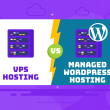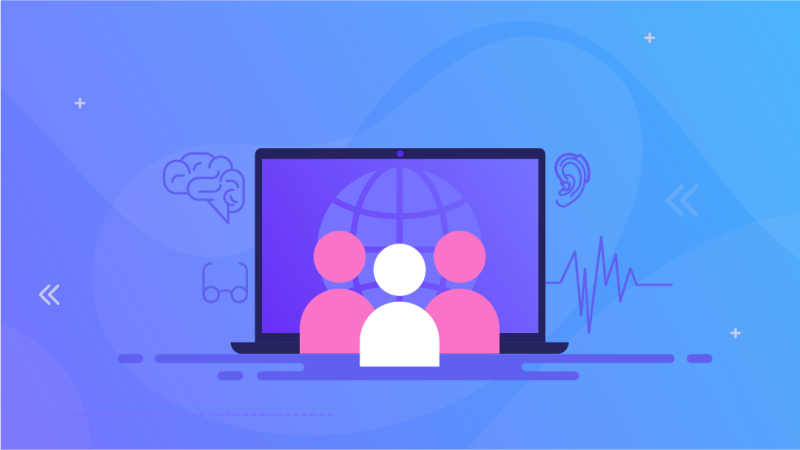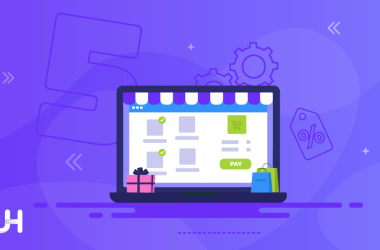Do you want to make a more accessible website for your users? Do you want to make your website an equal place for all visitors?
On the face of it ‘Web Accessibility’ sounds very simple and straightforward but, there is more than meets the eye.
The World Wide Web was created in 1989 by Tim Berners-Lee. The first website was published in 1991 by CERN (European Organization for Nuclear Research) and since then there has been an exponential growth in websites on the internet.
The World Wide Web was designed for a majority of users who have no difficulty seeing, hearing or using standard input devices. It’s also not designed to be universally understood, so even if you speak English, you may still find yourself struggling with some words or phrases.
Web accessibility is the practice of making web content accessible to people with disabilities, including visual impairments, hearing impairments, cognitive limitations, and physical disabilities. This includes the practices of removing barriers to access and providing alternative content. Web accessibility also includes the use of technologies that allow for independent navigation and interaction with websites.
Web accessibility is not just about making sure a website is compatible with people who are visually impaired or have motor disabilities. It also includes people who have hearing or cognitive disabilities. Web accessibility ensures that everyone can use the internet and all its tools without any limitations. The importance of Web accessibility is not only about making sure that people with disabilities are able to access information on the internet; it also includes making sure that all users can benefit from the same web experience. It is about providing all people access to the same information and opportunities.
Web accessibility is an important part of the web that can’t be ignored. It’s a common misconception that all disabled people use screen readers and other assistive technologies. However, many disabled people just want to be able to access the same content as everyone else on the web – this is where web accessibility comes in. The importance of web accessibility is evident from the fact that more than 1 billion people around the world have a disability. Accessibility has become a standard for all websites and there are regulations that require companies to make their websites accessible to everyone.
The World Wide Web Consortium (W3C) has developed a set of guidelines that help developers make their websites accessible for everyone, regardless of their physical ability, language, or location. These guidelines of web accessibility are free for anyone to use. These standards are called “Web Content Accessibility Guidelines” or WCAG 2.0 Level AA – meaning they are “Double A” compliant (or “AA”). The guidelines recommend different levels of compliance depending on the needs of an individual’s disability; however, they can be applied in no specific order. There are recommendations for how to make websites accessible for all users, including those with disabilities such as blindness or low vision, deafness or hearing loss, learning disabilities etc.
There are many types of disabilities that can make it difficult for people to use the internet. Some examples are blindness and color-blindness, deafness and hearing loss, dyslexia, physical disability or mobility impairment and cognitive disability such as autism or intellectual disability.
The internet has become an integral part of our lives, and it is important that the web be accessible to everyone, regardless of their abilities. Web accessibility ensures that people with disabilities can use the internet equally, regardless of their limitations or disability. There are more than 1 billion websites exist today which means there are millions of ways for individuals to find information on the internet but it also means that there is a large gap for allowing access to disable individuals that must be filled.
The Web Accessibility Initiative (WAI) is an international effort to make the web accessible for people with disabilities. The WAI provides guidelines, tools, and resources to help organizations develop web content that is accessible to everyone.
The question arises, “As a website owner, how does all of this concern me?”. If you choose to make your website more friendly, easy-to-use and accessible, you will be improving the User Experience of each person that visits your website. If you choose not to, there are plenty of cases to find where companies have been sued because their website was not accessible.
Here are some tips on how to abide by the laws of Web Accessibility:
- Easy to Read: The content on your website, especially the content that is in the textual form must be easy to read and comprehend. For viewers with visual impairments, this is very important as they will likely be using screen-reading software to understand the content on your website. This is even more important if you own some sort of a commercial website.
- Easy to Operate: All the links on your website, the actions and any interactions that are available for the user to make must be clear and within easy reach. There should be no element on your website that would impair a disabled person from using it equally as an able person would. For example, there must not be strong, bright videos or imagery as that may cause harm to epileptic people.
- Easy to Understand: This links back to the first point as well. All the content on your website, whether it is text or visual must be easy to understand and make sense of for a layman. For a commercial website, there should be no hidden meanings or terms of service that your viewer cannot find or see clearly.
- Equal: Your website should provide a unanimously accessible experience. This means your website should provide the same experience to a disabled person as to an able person. As a result, your website would be considered accessible and convenient for disabled people.
You can view more details about the guidelines here.
Did you find this article useful? Keep reading our blog for more stuff like this!










